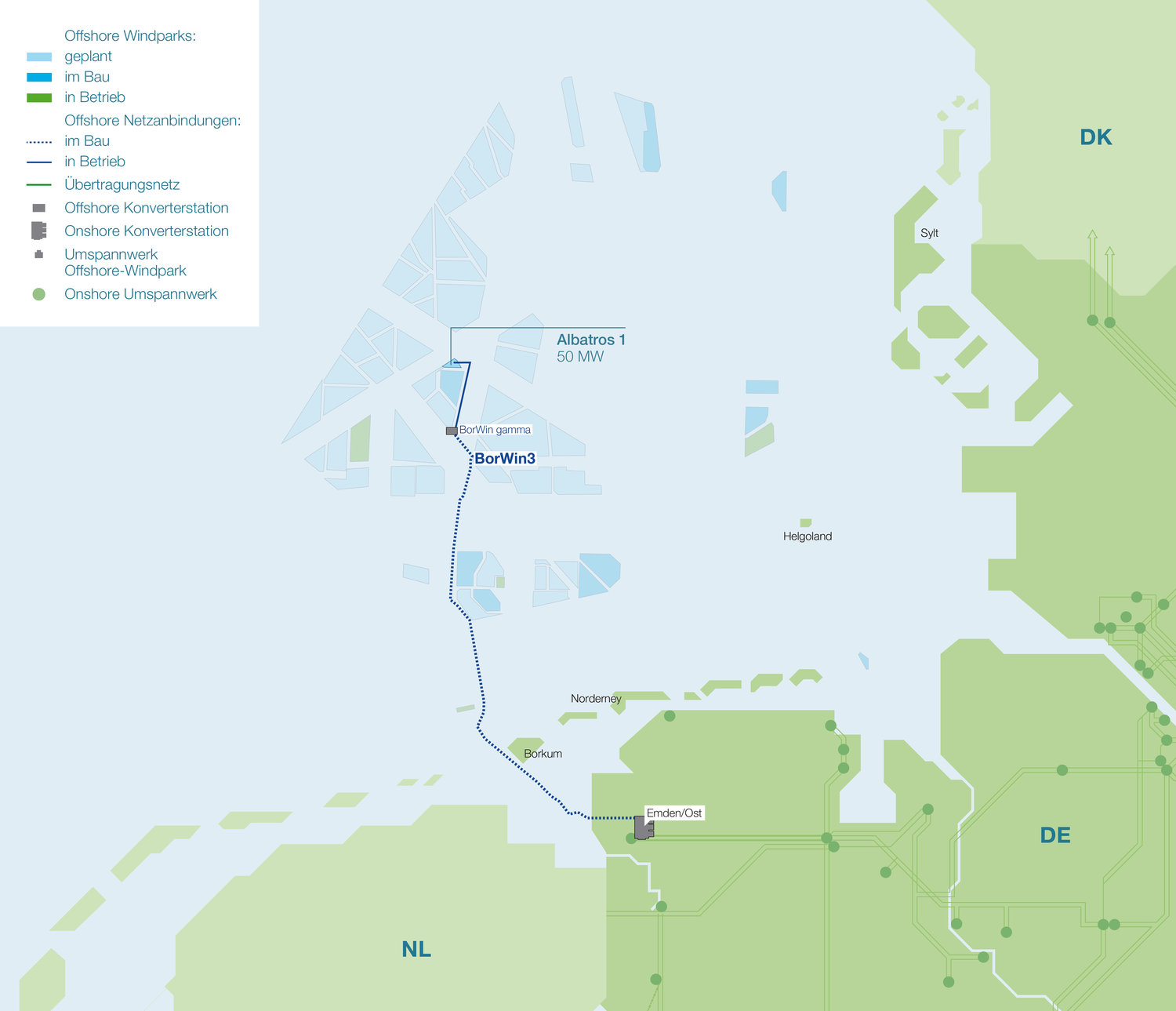News Release from windfair.net
Wind Industry Profile of
European Grid Expansion: Between Innovation and Resignation
Offshore is booming
Last week energy ministers of nine northern European countries stepped out and promised to work more closely together in the development of offshore wind energy. Germany, Belgium, Ireland, France, Luxembourg, the Netherlands, Norway, Sweden and Denmark want to ensure that the costs of offshore wind will fall further and the expansion of the industry is continually advancing. In addition, they want to address the question of how national rules for network management, subsidies and permits can be better harmonized internationally.
These countries were supported by 11 mayor players from ihe industry, who said that it is possible to produce offshore wind power for a price of 80 Euros per MWh by 2025. It would thus be made competitive to electricity from coal and gas. Prerequisite for this are stable, long-term policies and closer international cooperation. Signatories include the likes of Siemens, Vattenfall, E.on, Adwen, EDPR, Eneco, GE, Iberdrola, MHI Vestas, RWE, and Statoil.
On Tuesday another, purely Dutch campaign also announced to be working on a cost reduction for offshore wind energy.
TenneT’s Vision: An island in the North Sea
It fits into the picture that Dutch-German transmission grid operator TenneT came around the corner with another great vision: On Friday, the company unveiled plans to build an island in the North Sea to synchronize the European offshore grids stronger and thereby reduce the costs of offshore wind farms.
The project sounds ambitious: An artificial island will be built in the North Sea with several wind farms erected close to it. The electricity produced will run to the converter station located on the island and will then be transported to the connected countries where needed. Another advantage of the island: There will be accomodation for the offshore workers on it, thus reducing time and costs for boat or helicopter transports.
As a possible location Tennet has chosen Dogger Bank located about 100 kilometers off the English coast. The water depth of the North Sea there is only about 10 to 20 meters, but the winds are very strong. Ideal conditions for offshore wind farms which would become near-shore wind farms due to the proximity to the island, which also means cost savings in the millions. A converter station directly on the island rather than in the water brings further cost savings. And through networking among the various North Sea countries, it should also be cheaper to transport electricity directly to where it is needed. Thus there will be no further electricity production for the garbage bin any more.
The project could really work – with all neighboring countries participating. However TenneT recognizes the Memorandum of Energy Ministers as a first step in the right direction. Mel Kroon, CEO of TenneT, underlined the importance of cooperation: "It will be essential for the six European North Sea countries to be willing, in due course, to make their targets independent of national borders, which means agreeing that the electrons generated offshore must not necessarily be transmitted to their own country.”
Fighting over each kilometer
How difficult it is, however, to co-ordinate different authorities and responsibilities even within one country is something TenneT currently gets to know in Germany. Here, the company is also responsible for large parts of the onshore grid expansion next to the grid connection of offshore wind farms. This expansion, however, has been nearly stalled in recent time.
Especially in southern Germany – led by Horst Seehofer, including his party and the Federal State of Bavaria – there are cross fires against planned power lines which will transport wind power from north to south, so all schedules are already no longer feasible. Also, due to massive protests by citizens there will be a lot more underground cables instead of normal transmission towers. This is expensive and time-consuming, which is why the Federal Agency responsible for grid expansion now states that the complete SuedLink-line can be completed in 2025 earliest.
 This in turn has further costly consequences: Currently, there are several offshore wind farms constructed in the German North Sea (namely, Hohe See and Albatros) whose power is to be transported via the BorWin3 connection. There, at the new substation of Emden/Ost the direct current is converted back into three-phase current and then fed into the grid. According to an n-tv report on Sunday, both substation and the first offshore wind farm will be completed in 2019 – but the necessary power line will not be completed before 2021. This means that annually electricity worth up to 900 million Euros will be produced, but cannot be fed into the grid. The costs for this will be paid by the consumers.
This in turn has further costly consequences: Currently, there are several offshore wind farms constructed in the German North Sea (namely, Hohe See and Albatros) whose power is to be transported via the BorWin3 connection. There, at the new substation of Emden/Ost the direct current is converted back into three-phase current and then fed into the grid. According to an n-tv report on Sunday, both substation and the first offshore wind farm will be completed in 2019 – but the necessary power line will not be completed before 2021. This means that annually electricity worth up to 900 million Euros will be produced, but cannot be fed into the grid. The costs for this will be paid by the consumers.
TSO TenneT has already told bizz.energy that the new target date of 2025 for the whole transmission line is "ambitious", but also stressed that there are always problems with the required permits. Insofar TenneT’s vision based on an joint European electricity grid is a step into the right direction. But if the involved authorities of all the countries concerned will ever be able to agree on such a joint action is highly doubtful, to our disadvantage.
- Author:
- Katrin Radtke
- Email:
- kr@windmesse.de
